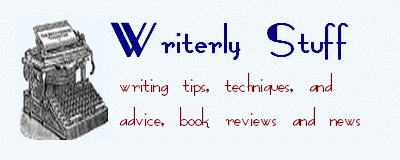I just finished critting the first chapter of someone's novel, and it was a tough slog. Not because it didn't have its exciting moments; it did. Not because the opening sentence was a fairly good start; it was.
The author, though, insisted on jumping from one point of view to another - sometimes within the same paragraph!
I know, I know: Larry McMurtry did that in Lonesome Dove. Or so I'm told, as I haven't read the book.
I'm not a fan of it, Mr. McMurtry notwithstanding.
Why? It confuses the heck out of me, that's why. Whose thoughts am I supposed to be getting into? Who am I rooting for or hissing at? To me, if there's a great big jumble in one paragraph, I'm not going to stick around and sort it out (especially if I still don't understand after reading said paragraph 2 or 3 times).
Let Me Know When You Make the Switch
The one WIP I have has 2 different points of view, so I'm obviously not opposed to multiple viewpoint stories. All I ask is that you let me know ahead of time when you switch from one character to another.
'Kay?
Just set 'em off with 3 asterisks (***) or with a pound sign (#), and I'll be happy. Well, at least with knowing that I'm about to embark on another character and his or her thoughts.
About Different Viewpoint Characters
That's not the only thing to think about. In the excerpt I critted, there were 3 different viewpoints. That, in and of itself, is fine. I read Elizabeth Bear's first trilogy which, if I remember correctly, had 3 (or was it 4?) viewpoint characters.
But they were carefully delineated, with one in the form of short diary entries, another in present tense, etc. It was fairly easy to follow, but it took me a while to get used to present tense; after finally reading a short story that worked extremely well in present tense (a lovely story out of Realms of Fantasy magazine), I went back to the opening book of that trilogy - and that part clicked. It turned out to be quite and intense and dark first book. (Alas, too dark for me at the moment. I still have to finish the other 2 books, but I'll get to them at some point.)
Anyway, I made the suggestion to limit this author's particular story to 2 viewpoints, which, interestingly enough, included not only a man's viewpoint, but a dog's viewpoint. I'm a dog lover, so I was hooked. :-)
I think it's something all fiction writers have to keep in mind: How best do I let this story unfold? One viewpoint? Two or more viewpoints? Through which characters' eyes should this story unfold?
And, sometimes, even the right POV (1st, 2nd, or 3rd) is a big question.
But that's a question for another post. :-)
~Nancy Beck
Six Things Writers Need To Stop Worrying About
6 years ago


2 comments:
Head-hopping definitely annoys me, and I'll bail on a story where it's done indiscriminately. There's occasionally a good reason to head-hop (although I've yet to be convinced that there's ever a good reason to do it within a single paragraph), but the other 99.8% of the time, one POV per scene is a really good rule to stick with.
And even telling people one-per-scene doesn't always do it, because then you have to be sure they know what a scene is, as a structural element of a story, and what is and is not a good reason for doing a scene break. If someone's "scenes" are only a paragraph or three long, I don't care how many asterisks they put between them; if it's pretty clear that the only reason they did a scene break was as an excuse to switch POV characters (and you can almost hear the writer muttering, "There! Now I only have one POV per scene so shut up about it already!") then they're obviously missing the point. [sigh]
Angie
...if it's pretty clear that the only reason they did a scene break was as an excuse to switch POV characters (and you can almost hear the writer muttering, "There! Now I only have one POV per scene so shut up about it already!") then they're obviously missing the point.
You're right, of course. I had to (absolutely HAD TO) get rid of one POV character in my WIP. I wasn't consciously doing it just to say "See what I can do!" ;-), but I realized that the info in that particular scene was explained a little later on in that chapter - from the POV of the main character. As much as it hurt to cut that stuff out (it had its funny and poignant moments), I decided that POV wasn't necessary.
There was only one other part of the book where we're in that particular character's POV (which I'll also cut out), so it's not as if I'd be leaving a hole in the narrative.
Post a Comment